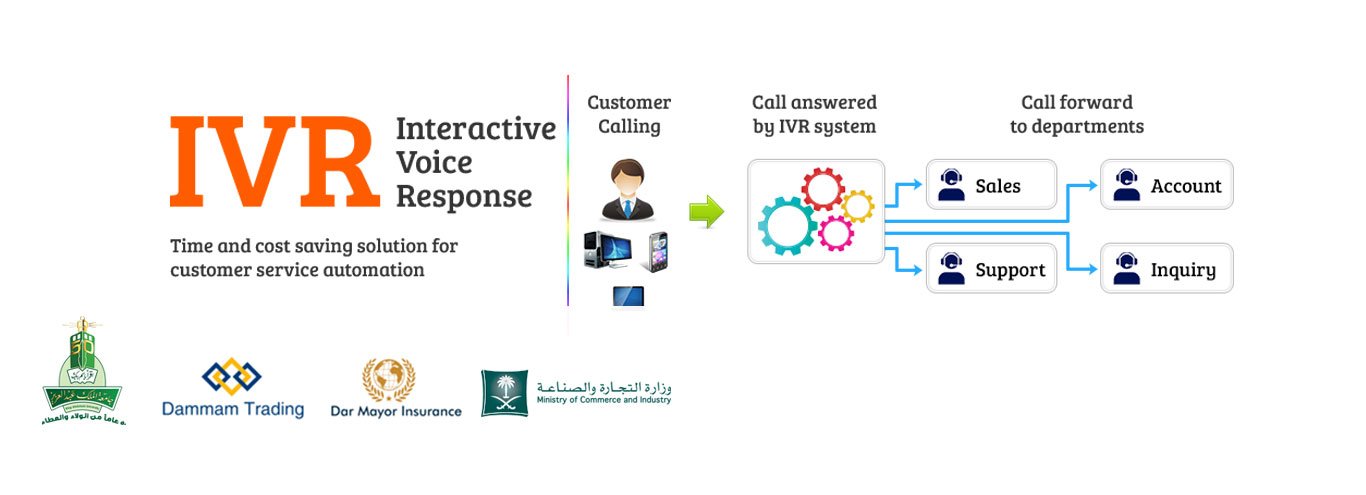In the vast and ever-evolving landscape of eCommerce, a powerful force is beginning to reverberate: voice commerce. The Resonating Ripple, as we will come to know it, is set to transform the way we interact, engage, and transact in the digital realm. Picture a world where shopping is as effortless as uttering a few words, where personal assistants anticipate our needs, and where the boundaries between technology and human connection blur. Join us on a journey into the echoing impact of voice commerce on eCommerce, as we unravel the possibilities and uncover the potential pitfalls hidden within this innovative realm. Brace yourself, for the resonance of voice commerce is bound to shake the foundations of traditional online shopping.
Table of Contents
- The Power of Voice Commerce: Revolutionizing the eCommerce Landscape
- Unlocking New Potential: Understanding the Impact of Voice Commerce on Consumer Behavior
- Harnessing the Echo: Strategies and Recommendations for Businesses in the Voice Commerce Era
- Voice Assistants as the Future of Shopping: Paving the Way for Seamless Customer Experiences
- Q&A
- In Conclusion

The Power of Voice Commerce: Revolutionizing the eCommerce Landscape
HTML formatting:
In today’s digital age, technology continues to evolve, constantly shaping and transforming the way we interact with the world. One area that has seen significant advancements and is revolutionizing the eCommerce landscape is voice commerce. Voice commerce, also known as V-commerce, refers to the use of voice commands and virtual assistants to conduct online transactions and make purchases. This emerging technology is changing the way consumers shop, offering convenience and efficiency like never before.
- Voice assistants like Amazon’s Alexa, Apple’s Siri, Google Assistant, and Microsoft’s Cortana have become popular tools for voice commerce. These virtual assistants can help users search for products, add items to their shopping carts, and even make purchases without having to touch a single button.
- Voice commerce simplifies the shopping experience, particularly for those with limited mobility or visual impairments. Users can effortlessly browse through a wide range of products and complete transactions using just their voices. This inclusive approach enhances accessibility and ensures that everyone can participate in the online shopping experience.
- With more and more devices integrating voice-enabled technology, voice commerce is becoming omnipresent. Smart speakers, smartphones, smart TVs, and even cars equipped with voice assistants are providing seamless access to online shopping regardless of location or device.
- V-commerce offers personalized recommendations based on individual preferences and past purchase history. Virtual assistants gather data on user behavior and offer tailored suggestions, making the shopping experience more engaging and personalized.
The impact of voice commerce on eCommerce is undeniable. It not only streamlines the buying process but also opens up new opportunities for businesses to engage with customers. As this technology continues to advance, it will be fascinating to see how voice commerce shapes the future of online shopping.

Unlocking New Potential: Understanding the Impact of Voice Commerce on Consumer Behavior
In today’s digital age, technology has permeated every aspect of our lives, including the way we shop. One such technology that has revolutionized the way consumers interact with online retail is voice commerce. As the name suggests, voice commerce refers to the use of voice commands and virtual assistants, such as Amazon’s Alexa or Apple’s Siri, to make purchases online. This emerging trend has rapidly gained traction, and its impact on consumer behavior cannot be overlooked.
The convenience and ease of use offered by voice commerce have made it popular among consumers. With just a few words spoken into a smart device, users can effortlessly place orders for products, get personalized recommendations, and even track their deliveries. This seamless and frictionless shopping experience has significantly influenced consumer behavior, leading to:
- Increased Impulse Buying: Voice commerce has made it easier than ever for consumers to make impulsive purchases. With the ability to quickly order items just by voicing their requests, shoppers are more likely to add unplanned products to their carts.
- Shift in Product Preferences: The use of virtual assistants in voice commerce has led to a shift in the way consumers explore and discover new products. Instead of visually browsing through online stores, shoppers now rely on spoken recommendations from virtual assistants, potentially altering their purchase decisions.
- Enhanced Customer Engagement: Virtual assistants are becoming increasingly sophisticated, allowing for interactive and personalized shopping experiences. This level of engagement between consumers and brands can deepen brand loyalty and create a lasting connection.
In conclusion, the rising tide of voice commerce in the eCommerce landscape has propelled significant changes in consumer behavior. As more consumers embrace the convenience of shopping through voice commands, businesses must adapt their strategies to accommodate this rapidly growing trend. Whether it’s optimizing their websites for voice search or leveraging virtual assistants for personalized recommendations, brands that understand and harness the impact of voice commerce on consumer behavior will unlock new potential in the digital marketplace.

Harnessing the Echo: Strategies and Recommendations for Businesses in the Voice Commerce Era
Understanding the Voice Commerce Revolution
With the rise of smart home devices like Amazon Echo and Google Home, voice commerce has emerged as a game-changer in the world of eCommerce. The convenience of voice-assisted shopping allows customers to simply ask for products or services using natural language, prompting a swift and effortless purchase. This significant shift in consumer behavior presents both immense opportunities and challenges for businesses aiming to excel in the voice commerce era.
Strategies for Success in Voice Commerce
To harness the echoing impact of voice commerce and ensure your business stays ahead, here are some key strategies and recommendations:
- Optimize for voice search: Voice search queries are typically longer and more conversational than text searches. Tailor your website content to include natural language phrases and long-tail keywords that mirror how your customers speak.
- Prioritize user experience: Voice commerce emphasizes convenience and simplicity. Ensure your website or app is optimized for seamless voice navigation and offers an intuitive user interface that responds accurately to voice commands.
- Invest in voice-enabled technology: Explore integrating voice shopping capabilities into your digital platforms. This could involve developing a voice app, partnering with voice assistants, or incorporating voice search and ordering functionality within your existing website or app.
- Build brand loyalty: Personalization is key in voice commerce. Leverage customer data to offer tailored recommendations, exclusive deals, and personalized shopping experiences. Establish an emotional connection with consumers to foster brand loyalty.
- Embrace voice-enabled customer support: Voice assistants can provide instant support and resolve customer queries. Consider integrating voice responses for FAQs or offering a voice-enabled chatbot to provide exceptional customer service.
As voice commerce continues to reshape the eCommerce landscape, businesses that adapt quickly and effectively will thrive in this new era. By understanding the powerful impact of voice and implementing smart strategies, you can position your business at the forefront of this revolution, meet evolving customer expectations, and drive significant growth.

Voice Assistants as the Future of Shopping: Paving the Way for Seamless Customer Experiences
Voice assistants have rapidly transformed the way we interact with technology, and their impact on the world of shopping is no exception. As we embrace the convenience of hands-free interactions, voice-based technology is revolutionizing the way we shop and paving the way for seamless customer experiences. Let’s explore how voice assistants are reshaping the future of shopping and the ripple effects they have on eCommerce.
1. Enhanced convenience: Voice assistants like Amazon’s Alexa and Google Assistant have the power to make shopping hands-free and effortless. With just a simple voice command, users can add items to their shopping lists, make purchases, and even track their orders. This not only saves time but also eliminates the need for manual input, providing a more convenient and frictionless shopping experience.
2. Personalized recommendations: Voice assistants are becoming increasingly intelligent at understanding user preferences and patterns. By analyzing past purchases and user behavior, they can provide tailored product recommendations. For example, if a user frequently orders coffee beans, their voice assistant may suggest trying out a new coffee blend. This level of personalization enhances the shopping experience by offering relevant, curated suggestions that align with individual preferences and tastes.
Q&A
Q: What is the concept of voice commerce?
A: Voice commerce refers to the use of voice-assistant technology, such as Amazon’s Alexa or Apple’s Siri, to facilitate online shopping and other commercial activities through natural language voice commands.
Q: How does voice commerce impact traditional eCommerce?
A: Voice commerce is revolutionizing traditional eCommerce by introducing a more seamless and intuitive shopping experience. It allows customers to browse, order, and complete transactions using only their voice, eliminating the need for traditional browsing and typing.
Q: What makes voice commerce so unique and captivating?
A: Voice commerce captivates users with its ability to mimic human-like interactions. Through advanced natural language processing, voice assistants understand and interpret users’ commands, enabling a conversational shopping experience that feels more personal and engaging.
Q: How does voice commerce improve accessibility for consumers?
A: Voice commerce has tremendous potential to enhance accessibility for individuals with disabilities. By eliminating the need for visual and manual inputs, it allows visually impaired or physically challenged individuals to effortlessly navigate and engage in online shopping, making e-commerce more inclusive.
Q: Is voice commerce just a passing trend, or is it here to stay?
A: Voice commerce is not a passing trend; it is rapidly becoming integrated into our daily lives. As technology continues to improve, voice assistants are becoming more accurate, efficient, and ubiquitous. With more consumers adopting smart speakers and voice-enabled devices, voice commerce is set to reshape the future of e-commerce.
Q: What are the potential challenges and limitations of voice commerce?
A: Despite its tremendous potential, voice commerce faces a few challenges. Accuracy in voice recognition is one concern, as misunderstandings or misinterpretations can lead to unintended orders. Privacy and security are also areas of concern, as voice assistants constantly listen for voice commands, raising questions about data protection and misuse.
Q: How can businesses adapt to the rising popularity of voice commerce?
A: Businesses should prioritize optimizing their platforms for voice commerce by working closely with technology providers to integrate voice assistant capabilities. This includes enhancing product descriptions, streamlining purchasing processes, and ensuring compatibility with various voice-enabled devices, ultimately providing customers with a seamless voice commerce experience.
Q: What impact does voice commerce have on traditional retail stores?
A: Voice commerce presents both opportunities and challenges for traditional retail stores. While it may reduce foot traffic, it also opens doors for innovative in-store experiences where voice assistants can enhance customer interactions, offer personalized recommendations, and provide product information, ultimately bridging the gap between offline and online retail.
Q: Are there any emerging trends that are reshaping the future of voice commerce?
A: Yes, there are several emerging trends that will shape the future of voice commerce. Multimodal voice assistants, which combine voice and visual interfaces, provide a more holistic shopping experience. Additionally, integration with smart homes and Internet of Things devices allows consumers to control their homes and make purchases simultaneously.
Q: What are the potential societal impacts of voice commerce?
A: Voice commerce has the potential to significantly impact society by altering consumer behaviors, redefining privacy norms, and transforming the retail landscape. It can also contribute to reducing the digital divide by providing more inclusive shopping experiences for those with limited digital literacy or access to traditional devices.
Q: How can voice commerce continue to evolve and enhance user experiences?
A: To enhance user experiences, voice commerce must prioritize continuous improvement in voice recognition accuracy, personalization, and integration across platforms. Additionally, incorporating augmented reality and virtual reality features into voice commerce can create immersive shopping experiences that go beyond verbal interaction.
In Conclusion
As we sail through the ever-evolving world of technology, one undeniable fact remains: change is constant. And with each passing wave of innovation, we witness the birth of new possibilities, reshaping the way we interact, purchase, and navigate our digital lives. One such wave that has rippled across the vast sea of online commerce is the emergence of voice commerce, a phenomenon that has disrupted the very foundation of eCommerce and left an indelible mark on our shopping experiences.
In this article, we delved deep into the resonating ripple created by voice commerce in the realm of online shopping. We explored how this revolutionary technology has elevated convenience to unprecedented heights, allowing users to effortlessly navigate a vast array of options with just the power of their voice. From ordering groceries to booking flights, the integration of voice assistants like Amazon’s Alexa and Google Assistant has streamlined the traditional shopping process, making it more accessible, efficient, and personalized.
Yet, this resonating ripple goes far beyond the convenience it offers. It has spurred a redefinition of customer engagement and marketing strategies as brands strive to adapt to this new era. With the rise of voice search, businesses are vying for the coveted top spots in voice assistant recommendations, leaving no stone unturned in their quest for visibility and user preference. The game has shifted, and companies are now challenged to find innovative ways to captivate their audience through auditory engagement, harnessing the power of sound to establish memorable brand experiences.
However, amid the excitement and potential of voice commerce, we must also acknowledge the challenges that lie ahead. Privacy concerns, language barriers, and technological limitations are but a few hurdles that researchers and developers grapple with as they strive to refine this game-changing technology. As we explore the vast ocean of voice commerce, it becomes essential to address these complexities and seek sustainable solutions that prioritize user trust and security.
In a world where time seems to vanish in a blink, the resonating ripple of voice commerce has undoubtedly left a lasting imprint on the eCommerce landscape. Its impact has been awe-inspiring, disruptive, and transformative, painting a picture of a future where commerce melds seamlessly with our everyday lives. As we move forward, embracing this wave of change, let us navigate the waters of voice commerce with a steady hand, ensuring that it carries us towards an eCommerce experience that is not only efficient but also enriching for all.

